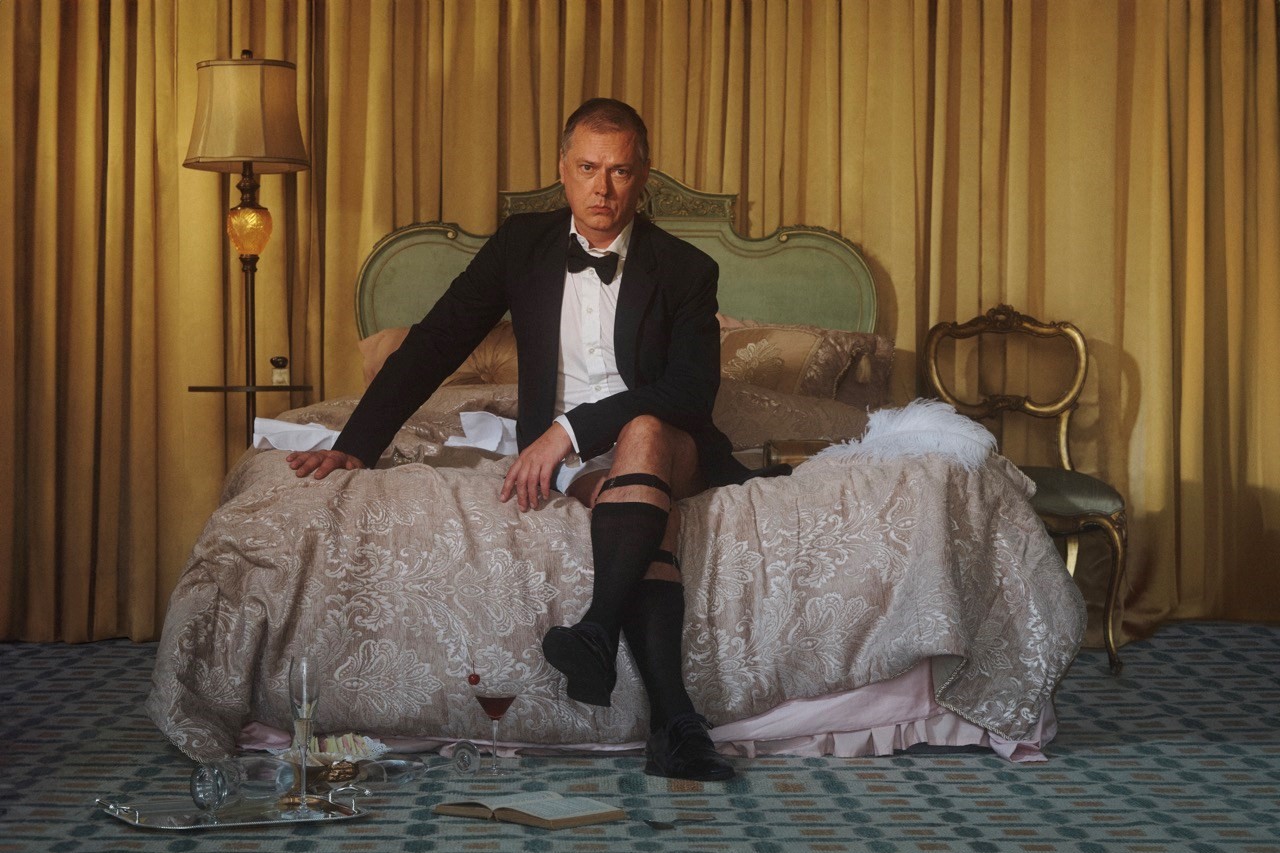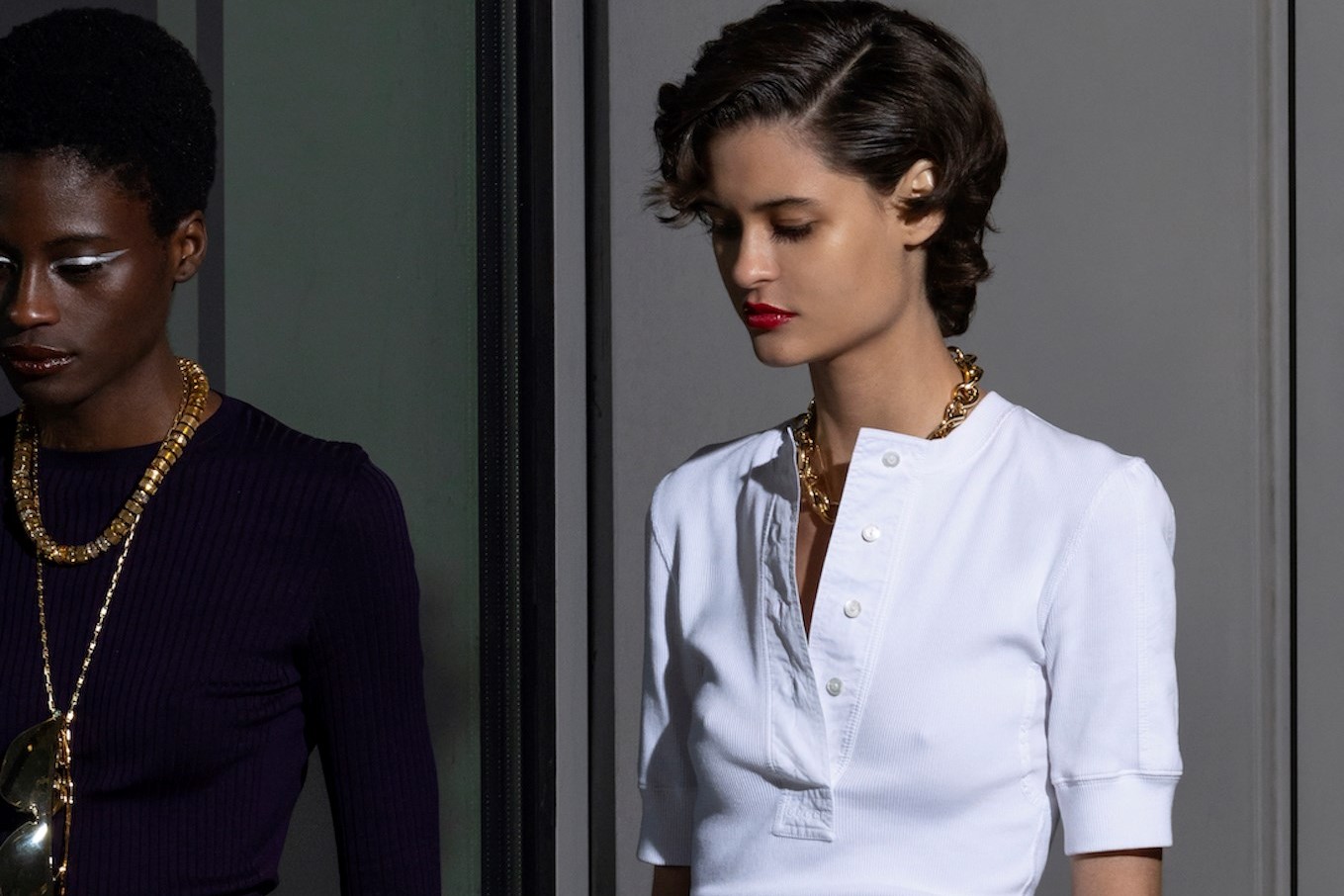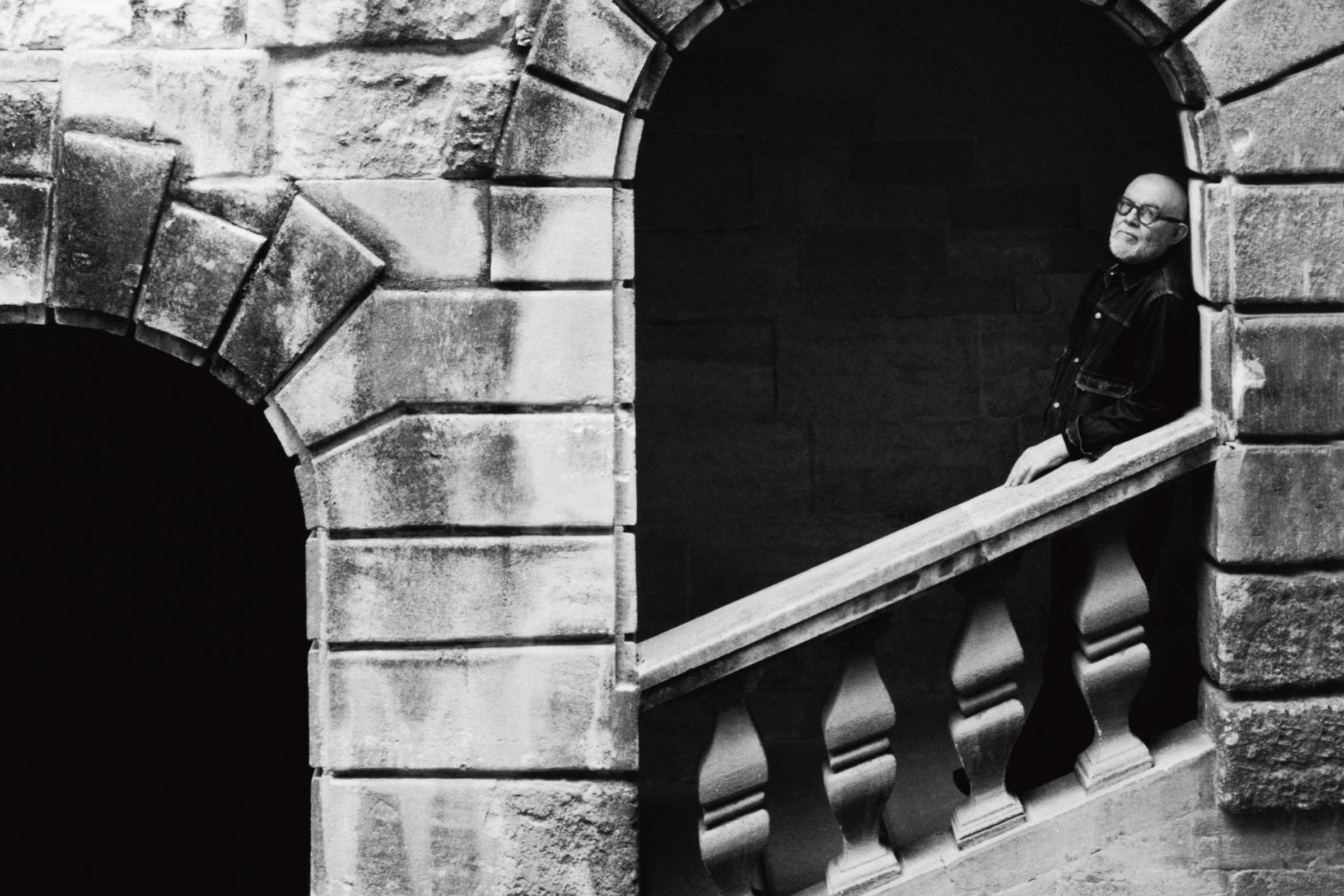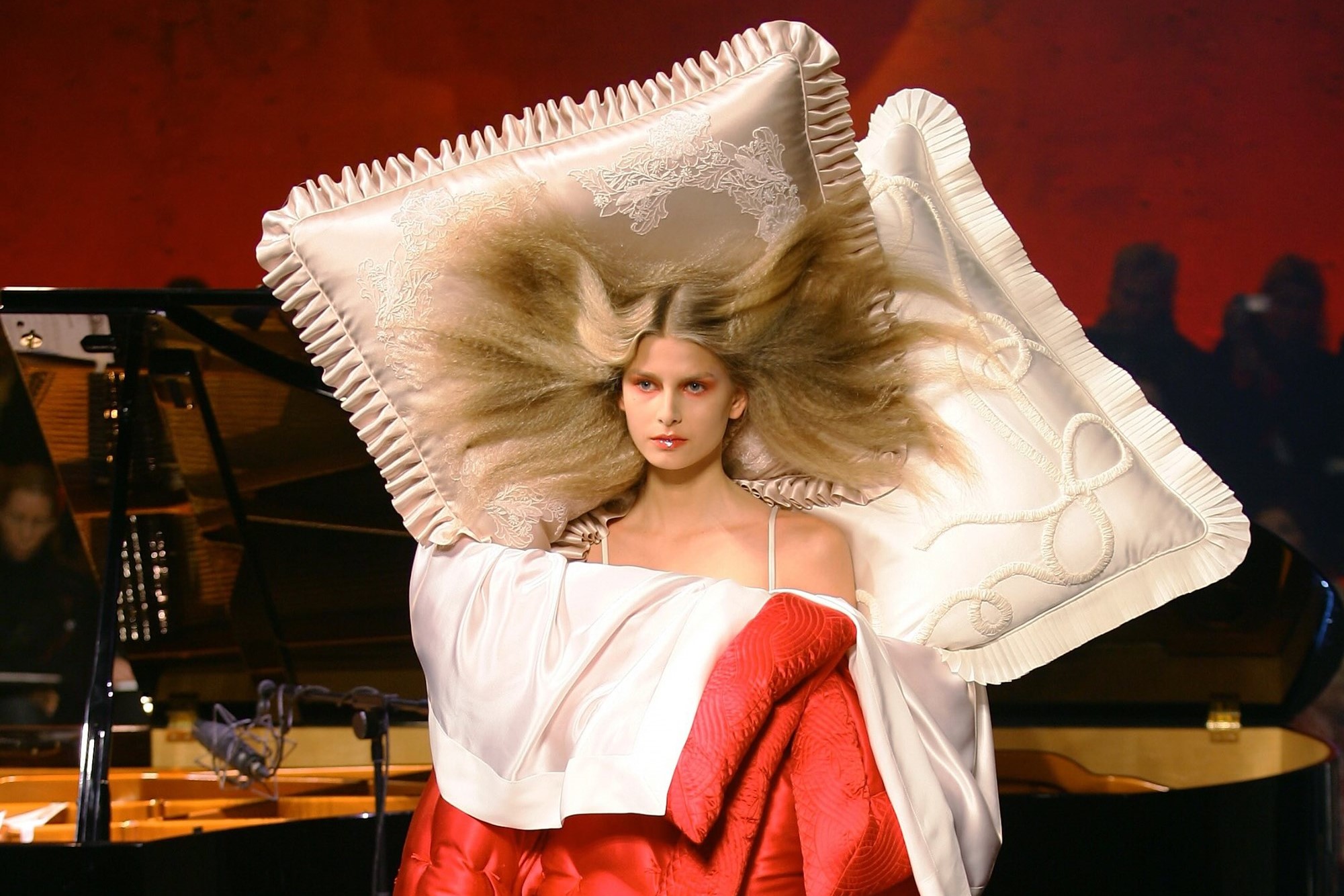Wayne McGregor describes his relationship with the designer who continues to blur fashion and other art forms
At 4pm on the second day of London Fashion Week S/S18, the entrance to the BFI’s IMAX was lined with braying animal rights activists, forming two claustrophobic walls of people on either side of the walkway into the building. Coincidentally, this was to mirror the visceral tone of Gareth Pugh’s new collection, set to be shown on the largest screen in Europe just moments later. This season, the designer had eschewed the catwalk in favour of a cinematic presentation, creating a 17-minute-long film in collaboration with photographer Nick Knight, performance artist Olivier de Sagazan and choreographer Wayne McGregor. “I love the fact that the best seats at the IMAX are in the back row rather than in the front row,” the designer said. “Rather than presenting something that is quite easy to look at, or something where you can be distracted by your phone, we chose to do it entirely differently.”
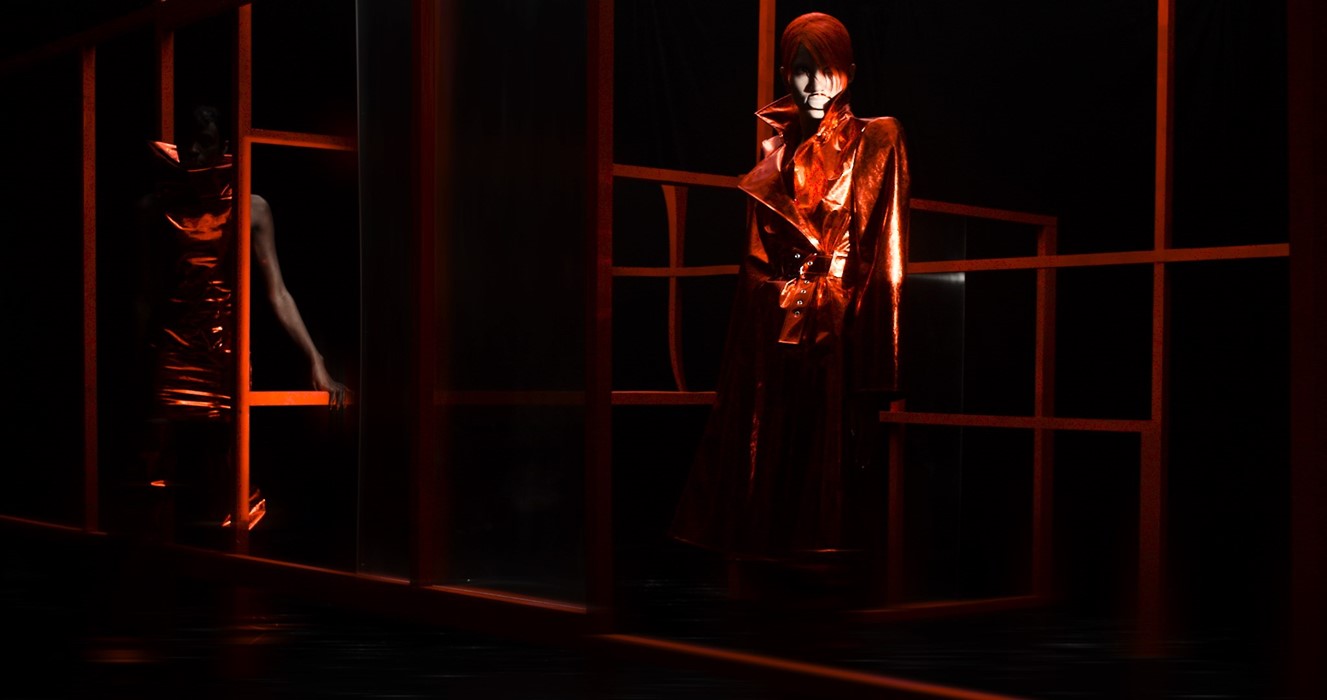
It seems that Pugh may have succeeded. From the moment the film began playing, the absence of iPhone screens being waved in front of it, as with most modern fashion shows, was striking. The audience remained transfixed to the unsettling sequence unfolding in front of them, and as such, devices remained firmly in pockets. “I think the thing that works so well with Gareth is that he is so uncompromising in what he wants to do – and especially in terms of fashion. It seems to me that he’s never done a collection that has to sell in a particular way, or adhered to the ‘system’,” Wayne McGregor reiterates over the phone, a few days after the screening. The choreographer, renowned for his integration of contemporary dance with film and visual art, is a long-time collaborator of Pugh’s, having initially discovered the designer’s work in 2010. “I just love what he does and I thought it would be amazing to invite him to the Royal Opera House and do something with me. So we did a project called Carbon Life together with Mark Ronson. And that was the first time I met him. We’ve worked together ever since,” he recalls.
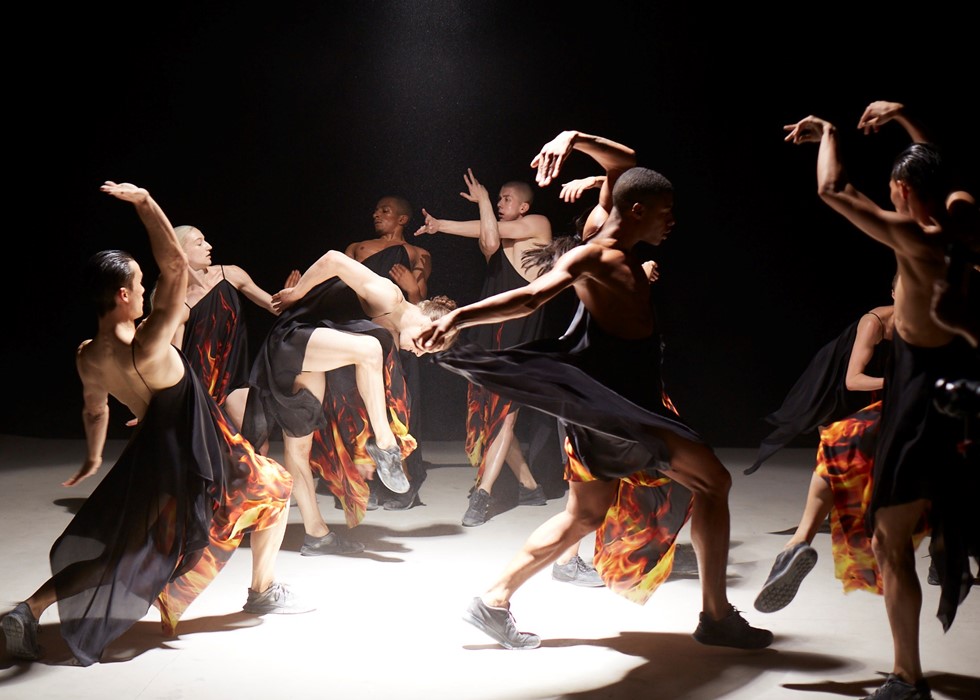
Both choreographer and designer have an intense appreciation for the media that they are primarily associated with. “I see dance in relationship to lights, cameras and clothes in the same way that Gareth sees his expression of fashion in relation to movement and action,” says McGregor. “He comes from a theatre background, so its really inherent in what he does.” Indeed, it wasn’t until around four minutes into Saturday’s showcase that we began to see fashion of any kind appear. This was interspersed with a writhing mass of bodies comprised of Studio Wayne McGregor’s company and performers shortlisted from an open casting call, answered by hundreds. “We wanted it to look like a Hieronymus Bosch – a hellish scene,” the director of movement explains. “Nick was going to be in the middle of the shot and all the bodies would be moving round him. It was intentionally very raw.”
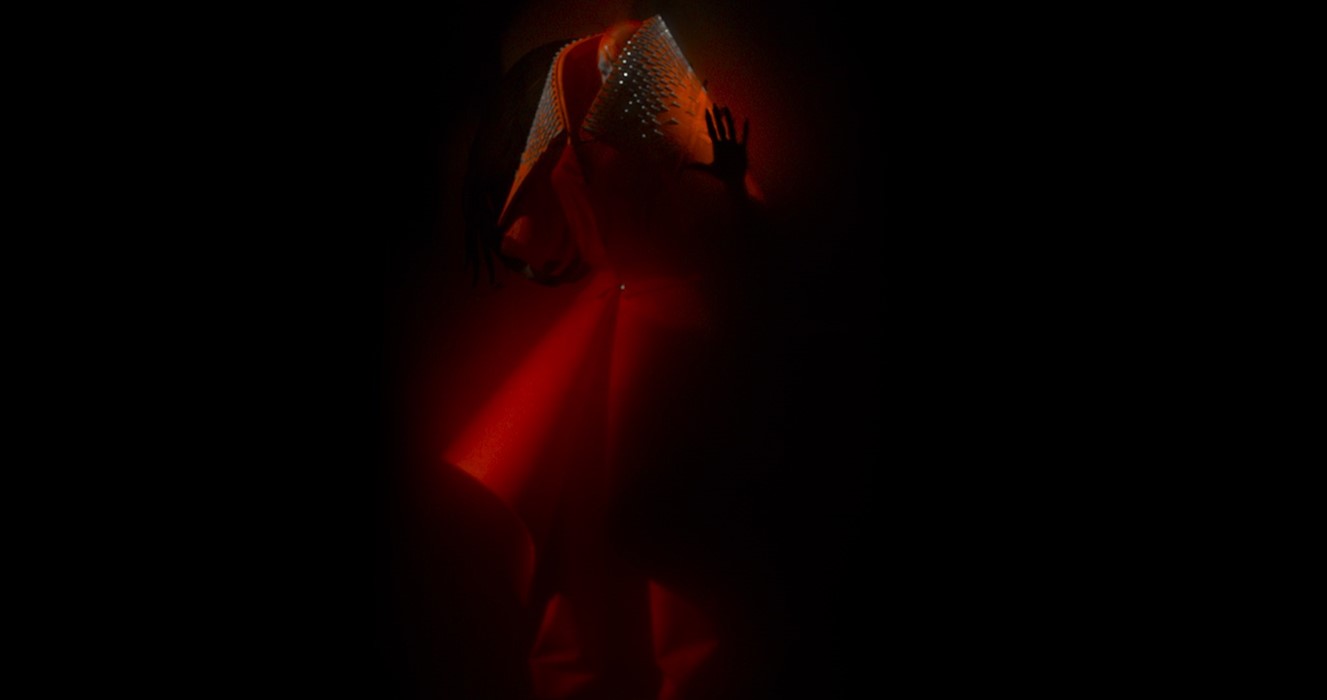
The question of whether the clothes dictate choreography, or vice versa, is pertinent. What comes first? It is, for all of Pugh’s rebellion against ‘the system’, a fashion collection. McGregor has an answer: “I think Gareth always has a very clear idea of what he’s feeling about the collection he’s making. And it is simply expressed in a lot of different ways. Sometimes that might be clothes first – and we’ve then interpreted that into movement, and sometimes it’s the feeling first, that primes you to look at the clothes in a particular way.” For S/S18 Pugh’s architectural coats, stiff metallic fabrics concertinaed into crumpled silhouettes, and PVC cage dresses formed the basis of a comprehensive ‘clothes first’ message, despite their filmic origins. The garments have been documented separately, and when seen fitted on models in still images they form a coherent collection. In the case of his silk pieces digitally printed with flames, watching them move on McGregor’s dancers truly ignited the designs. “You see the dancers moving in the clothes and then you know exactly the kind of movement that you should be directing,” he says. “I’d say this is true for a lot of what Gareth does – the clothes just really speak to you.”
